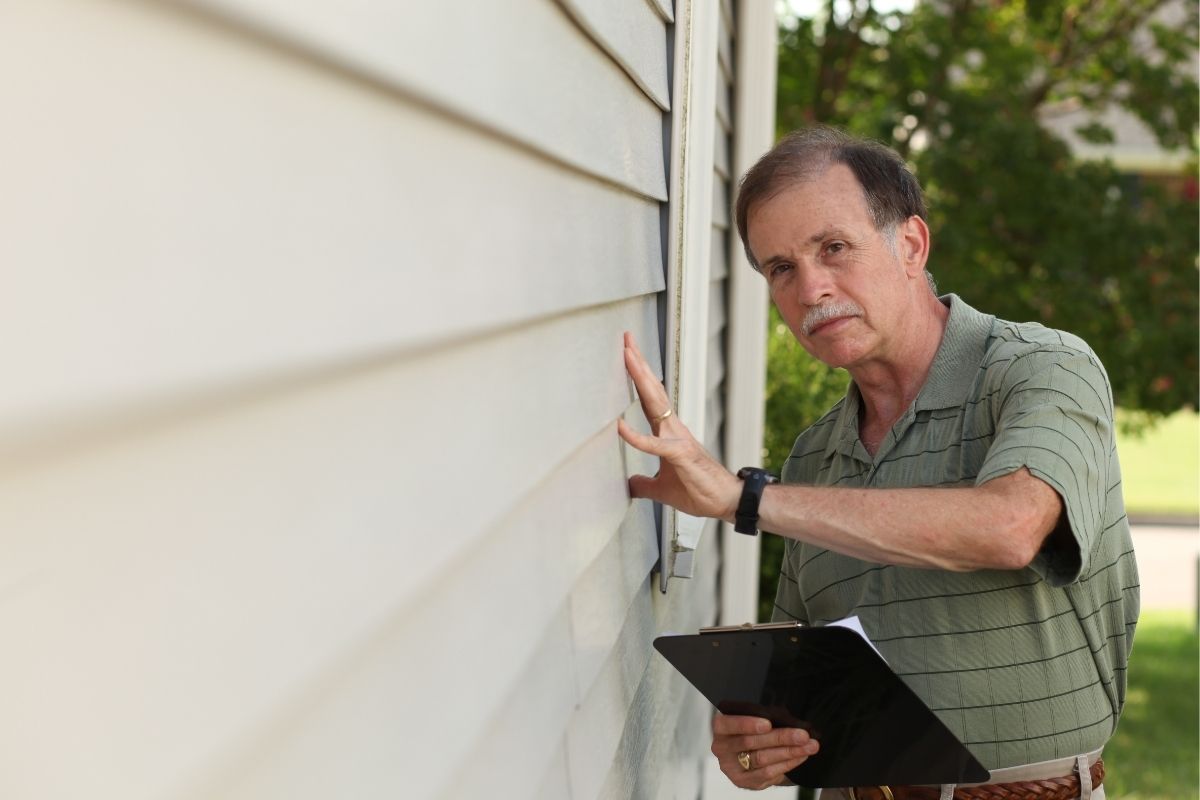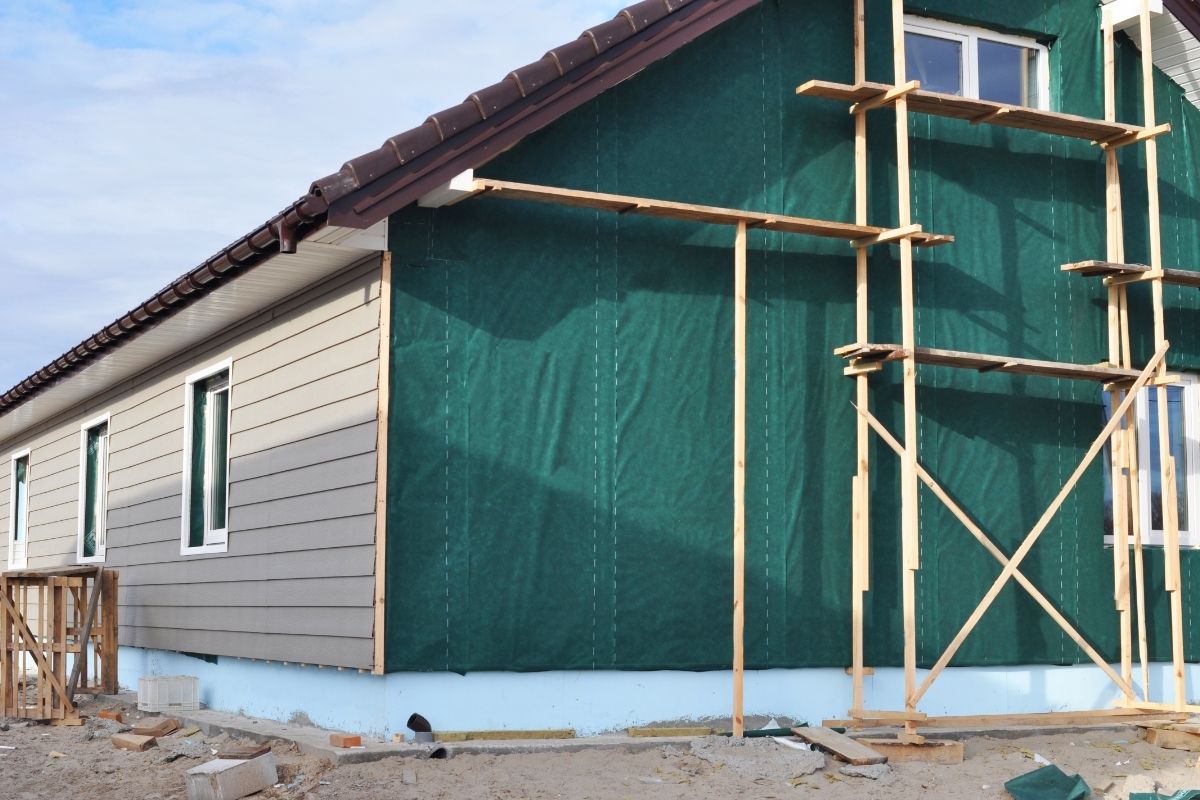Vinyl siding and fiber cement are two top choices when upgrading your home’s exterior. Both materials offer distinct benefits that can affect your home’s look, energy efficiency, and overall value. The decision isn’t just about price; it’s about finding what works best for your style, goals, and Dayton’s weather conditions. At DryTech Exteriors, we help homeowners make informed choices about their exterior upgrades. If you’re debating between vinyl siding vs. fiber cement, here’s what you need to know to maximize your investment.
Material Overview: What You’re Getting
Vinyl Siding
Vinyl siding is a lightweight, low-maintenance, and cost-effective option made from durable PVC plastic with baked-in color. Choosing vinyl siding installation provides homeowners with a diverse array of color and profile options. With proper installation, vinyl resists moisture, pests, and fading for decades, offering lasting beauty with minimal upkeep.
Fiber Cement
Fiber cement siding, such as James Hardie® products, combines cement, sand, and cellulose fibers. It’s a popular choice for siding replacement in Dayton, resulting in a material that’s thicker and heavier than vinyl, offering superior durability and impact resistance against the elements.
Fiber cement can also be manufactured to mimic the look of wood, stucco, or masonry, adding a premium, upscale appearance to your home’s exterior. It’s a strong choice for homeowners prioritizing longevity and upscale curb appeal. However, compared to vinyl, it typically comes with a higher upfront material cost and a more labor-intensive installation process.
Vinyl Siding vs. Fiber Cement: Key Differences to Know
1. Durability and Weather Resistance
Dayton experiences hot summers, cold winters, and plenty of storm activity. Fiber cement siding performs exceptionally well under those conditions. It won’t warp under heat, resists fire, and holds up against hail and high winds.
Vinyl siding is also weather-resistant but can warp or crack under extreme heat. Newer vinyl formulations have improved, but fiber cement still has the edge in total impact resistance.
2. Maintenance Needs
Vinyl siding is nearly maintenance-free. It doesn’t require painting, and a quick rinse with a hose keeps it looking great.
Fiber cement, on the other hand, requires a little more effort. It must be painted periodically (every 10–15 years, depending on the finish), and caulking around joints and windows may need to be touched up to maintain water resistance, making it a regular item on your home maintenance checklist.
3. Installation Costs and Time
Vinyl siding is faster and easier to install, which reduces labor costs. The material is also less expensive, making vinyl the more budget-friendly option.
Fiber cement costs more in terms of both materials and labor. The product is heavier and requires special tools and installation expertise. However, its durability and longer expected lifespan can offset those upfront costs.
Energy Efficiency and Curb Appeal: A Look at Vinyl Siding vs. Fiber Cement
When deciding the best time of year to replace your siding, homeowners weigh two key factors: energy efficiency and curb appeal. While neither vinyl nor fiber cement siding provides significant insulation, both can enhance energy performance when combined with insulated backing or house wrap. Vinyl siding is also available in insulated options, offering a direct boost to efficiency, which can be particularly valuable in climates like Ohio.
From a curb appeal standpoint, fiber cement offers a more refined appearance, effectively mimicking painted wood or high-end finishes. This makes it a strong choice for upscale homes or those focused on maximizing resale value. Vinyl siding, while more budget-friendly, still delivers clean, attractive results, especially with modern styles and textures that replicate wood grain and shake patterns, providing versatile aesthetic options.
Which One Is Right for You – Vinyl Siding vs. Fiber Cement?
Your specific goals determine which vinyl siding or fiber cement is best for you.
- Choose vinyl siding if you want an affordable, low-maintenance option that looks excellent and holds up well in moderate conditions.
- Choose fiber cement if you want maximum durability and an upscale appearance, and are willing to invest more upfront for long-term performance.
We will assist you in comparing these options side-by-side, considering factors like your home’s structure, budget, and maintenance preferences. Another premium option worth exploring in the area is Everlast siding, which is known for its unique material properties and benefits.
Upgrade Your Home’s Exterior with the Right Siding Solution

Choosing between vinyl siding and fiber cement doesn’t have to be difficult. By understanding the pros and cons of each, you can make the best decision for your home, budget, and long-term goals. Whether you’re focused on appearance, protection, or long-term value, both options can deliver excellent results when installed professionally.
Contact DryTech Exteriors today to schedule your siding consultation. As Dayton’s trusted roofing, gutters, and siding experts, we provide high-performance exterior solutions designed to protect your home and elevate its curb appeal. Let us help you make the right investment for your property.




